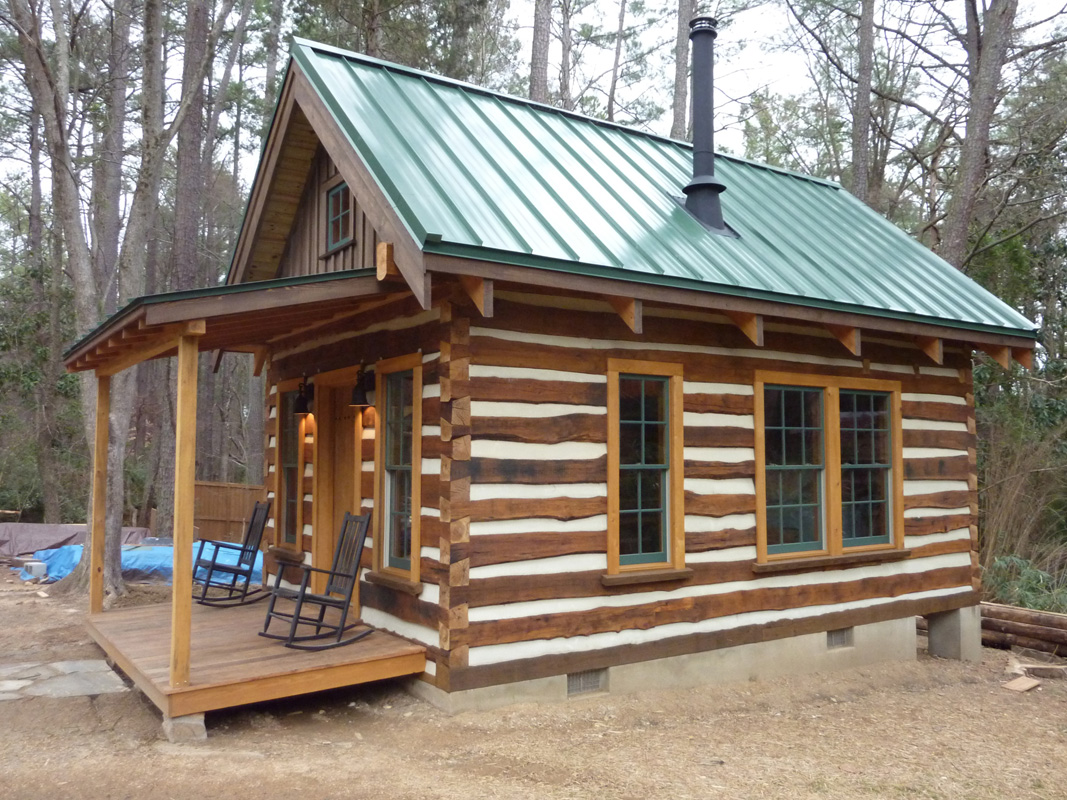
This method that I invented is intended to be an alternative to log cabin kits. It is listed under “Lumber Log Structures”. The most important thing with log cabins is air infiltration and this issue is address with the interlocking of logs and the chinking.įor a short amount of time I have a few of my booklets available on Ebay at a very reasonable price to help people who need a little more information. The concrete also serves as thermal mass for heat retention.Įfficiency wise I think that it would be equal to any other log cabin with walls of equal thickness. I am insulating the ceiling now and still have to put the chimney in for the wood burner. It took us about 10 days to put up the walls but we only worked about 6 hours per day. The two days work (part time) by them cost me $400. My entire building only cost me less than %10,000 w/concrete and I could have done it for about $7000 without the expensive garage doors, better shingles and epoxy floor.Ī really good friend came down from Michigan and helped me with the walls and I hired 2 guys to help me with the trusses and sheeting the roof. A local engineering firm approved my drawings with no problems at all and only charged $35. All the building inspector required was a third party approval to get the permit. Regarding permits, this structure as with all alternative building does not fit into the normal building code. I will try to answer a few of these questions. I finially have my own piece of heaven here in beautiful Middle Tennessee. This method of alternative construction gives you something that the others doesn’t, the ability to easily resell it if necessary. My walls for this 24′ by 35′ garage only cost about $3000 and is nearly all twelve foot, 2″ by 8″ lumber. To my suprise this turned out to be pretty low cost as well as efficient.


I used a nail gun but there is no reason that it couldn’t be done by hand nailing.įor chinking the small cracks between the logs I used more construction adhesive on the inside and outside to seal everything up and make it even stronger. I also used a 2″ by 2″ as a guide so that I didn’t apply construction adhesive or nail into the wrong areas. I just used 2″ by 2″s as spacers for the clamping jig to eliminate most of the measuring. I didn’t do a lot of measuring for the logs. Construction adhesive is also applied between logs. Before the log is stacked I just planed the corners to give it that groove between the logs that make it look like a log cabin. With this idea you basically are just gluing and nailing three boards together into a tongue and groove log that will interlock into the log above and below it. I had already planned on building a garage so this was the perfect way to test my theory with minimal problems. The next day I put a few boards together to get a better idea of what it would look like and then my idea really took off. When I saw the laminated log cabins, suddenly a light went off in my head and I wondered if it were possible to do that myself with ordinary lumber.

After doing a lot of research on the web I soon found out that a simple log cabin wasn’t exactly what I call cheap and nothing was available locally if I wanted to do it myself.


 0 kommentar(er)
0 kommentar(er)
